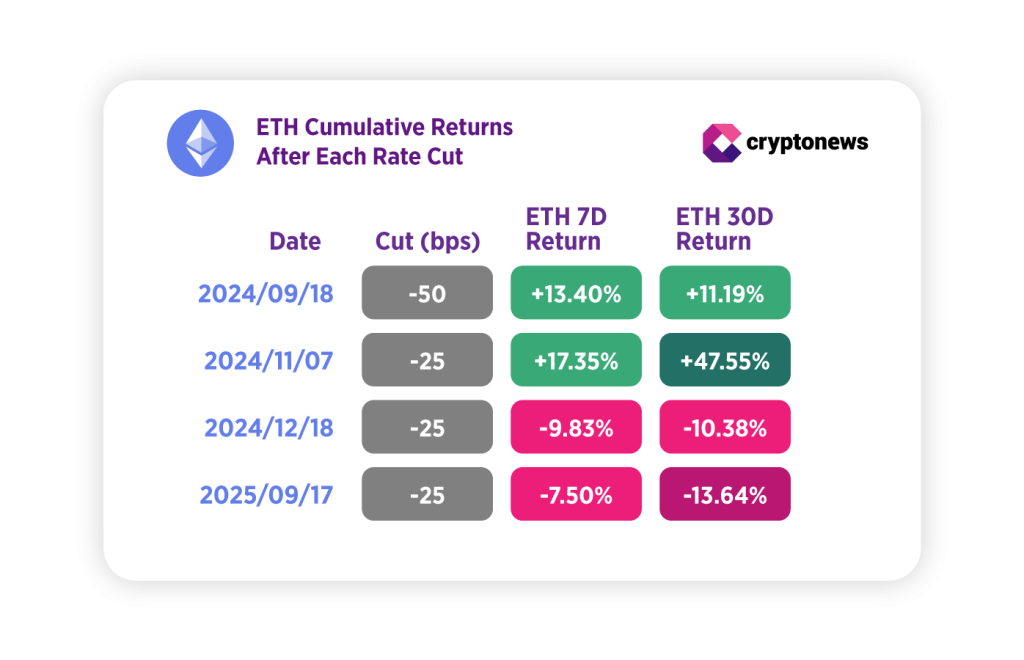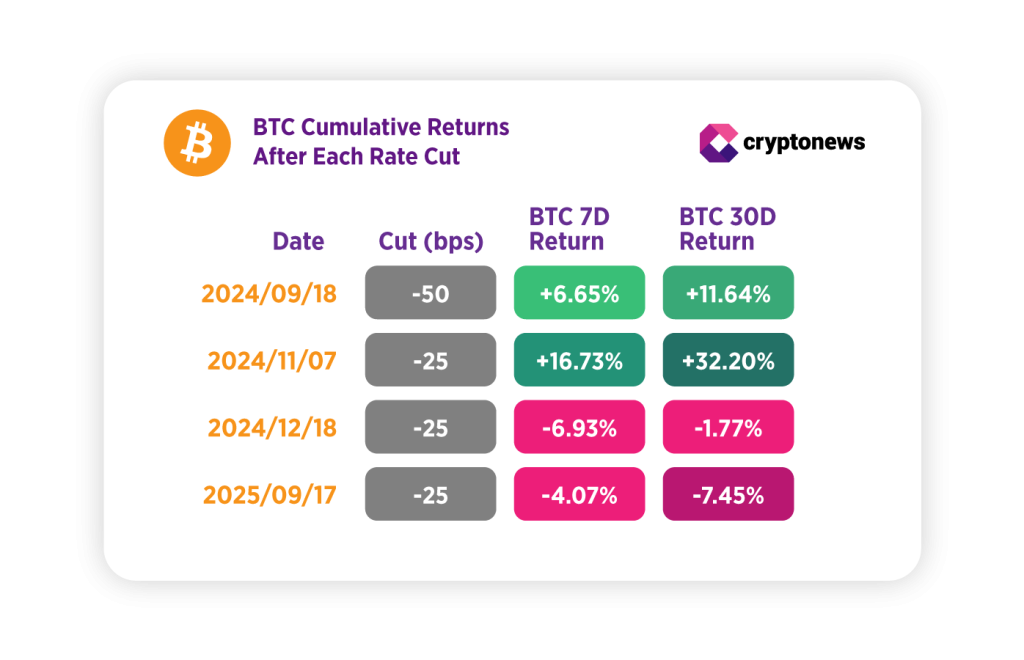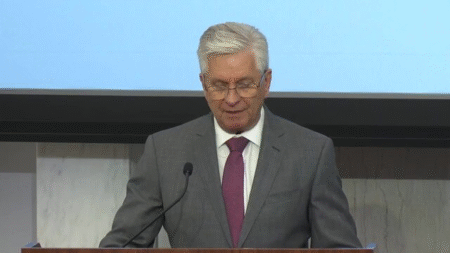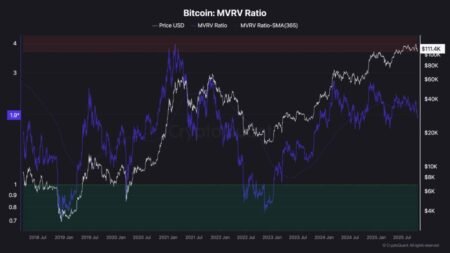Key Takeaways:
- The late-2024 Fed rate cuts triggered crypto rallies. Bitcoin and Ethereum both posted double-digit gains in the first weeks.
- Later cuts saw weaker or even negative moves, as the market had already priced in easier policy.
- Crypto tends to react most strongly to the first signs of a policy shift rather than to continued easing.
- With another rate cut expected this month, it’s unclear whether history will repeat. Other forces like sentiment, regulation, and global risks could play a role.
The Federal Reserve is expected to cut interest rates by 25 basis points later in October. According to the CME Group’s FedWatch Tool, there is now a 96.7 % chance of a rate cut at the next meeting. At the same time, the crypto market is under pressure from other macro headlines, such as the Donald Trump-China tariffs and worries about U.S. regional banks and bad loans.
How could the next rate cut affect crypto? When the Fed cuts rates, the market often experiences short-term volatility. While cuts are usually seen as a tailwind, the actual outcome depends on more than just policy: overall economic conditions, market sentiment, regulation, and geopolitical events all matter.
In this research, we examine the latest four Fed rate cuts — September 18, 2024, November 7, 2024, December 18, 2024, and September 17, 2025 — and look at how they affected Bitcoin and Ethereum immediately after the announcements.
The September 2024 cut sparked the biggest rally of the cycle. Within a week, Bitcoin jumped about 6.6% to around $64,300, and Ethereum climbed nearly 13% to $2,650. Over the next month, both gained roughly 11%. That could mean investors welcomed the Fed’s first clear pivot toward easier policy.
After the November 2024 cut, Bitcoin surged 16% in a week and more than 32% in a month. Ethereum rose 17% and 47.5% over the same periods.
By December 2024, the rally began to cool. Bitcoin briefly broke above $108,000 before falling back below $100,000. Ethereum dropped about 10% over the following month.
The most recent cut in September 2025 came at a time of already low rates and softer sentiment. Bitcoin slipped about 7% in the next month, and Ethereum lost around 13%. That could mean the impact of monetary easing is starting to fade for crypto.

The chart below tracks the Ethereum price against changes in the Fed’s rate. It shows general ETH/ USD price trends from September 2024 through October 2025. The right axis shows how much the Fed funds rate has fallen in total since the start of the easing cycle.
The data shows how the first rate cuts in September and November 2024 came with strong crypto rallies, while the later ones in December 2024 and September 2025 brought smaller or even negative moves. It suggests the market’s reaction weakened as investors had already priced in easier policy.
What It Means
The first two moves in September and November 2024 delivered the biggest gains, with Bitcoin and Ethereum both posting double-digit jumps over the following weeks.
However, by late 2024, the excitement seems to have faded. Markets had already priced in continued easing, and later cuts brought little or no upside. The strongest reaction came early in the cycle, when investors first sensed a turn toward looser policy.
As the Fed is expected to cut rates again this month, history shows that Bitcoin and Ethereum often react quickly at first but lose steam as the easing cycle continues. Market sentiment, regulation, and global risks also play a role, which suggests that monetary policy is only part of the story.
The post How Could Fed’s Next Rate Cut Affect Bitcoin and Ethereum? Here’s What History Shows appeared first on Cryptonews.
Read the full article here











